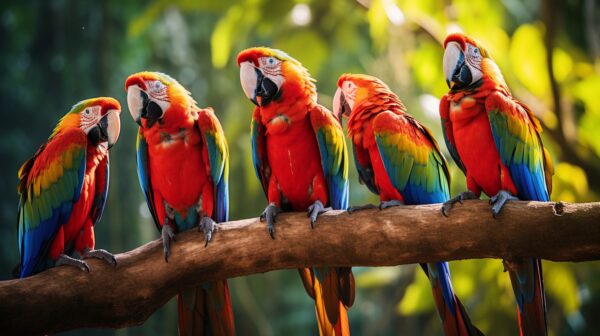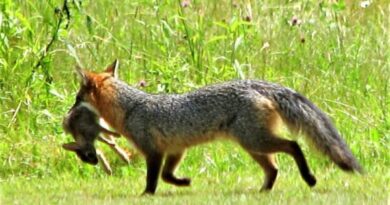Unveiling Nature’s Geniuses: The Most Intelligent Animals
In the grand theater of nature, intelligence manifests in fascinating and diverse ways across various species. From problem-solving birds to emotionally astute mammals, the animal kingdom is teeming with remarkable minds. Let’s embark on a journey to discover some of the most intelligent animals and the unique abilities that set them apart.
Dolphins: The Social Geniuses
Dolphins, particularly the bottlenose dolphin, are renowned for their sophisticated social structures and exceptional cognitive abilities. These marine mammals exhibit complex behaviors such as:
- Communication: Dolphins use a series of clicks, whistles, and body language to convey messages, and each dolphin has a unique signature whistle that functions like a name. Their communication system is so advanced that researchers liken it to a rudimentary language.
- Problem-Solving: They demonstrate advanced problem-solving skills, including tool use, such as using marine sponges to protect their snouts while foraging. This behavior, passed down through generations, showcases their ability to learn and adapt.
- Empathy and Play: Dolphins display strong bonds with each other and engage in play, which is often considered a sign of intelligence. They have been observed rescuing injured individuals and cooperating during hunting, indicating a high level of social intelligence.
Elephants: The Emotional Titans
Elephants, with their massive brains, are known for their profound emotional depth and impressive memory. Their intelligence is evident in several ways:
- Memory: Elephants have extraordinary memories, crucial for survival, helping them remember locations of water sources and migratory routes. They can recall routes and landmarks over vast distances and many years.
- Empathy: They show empathy and grief, mourning their dead and showing concern for other elephants’ well-being. Elephants have been observed performing burial-like rituals, a sign of their deep emotional capacity.
- Tool Use and Problem-Solving: Elephants use branches as fly swatters and have been observed working together to solve complex tasks. In captivity, they have been known to unlock gates and solve puzzles designed by researchers.
Chimpanzees: The Human Cousins
Sharing about 98% of our DNA, chimpanzees are our closest relatives in the animal kingdom and exhibit intelligence that often parallels human behavior:
- Tool Use: Chimps use sticks to extract termites from mounds, stones to crack nuts, and leaves as sponges to soak up water. Their ability to create and use tools is a testament to their problem-solving skills.
- Social Learning: They learn behaviors from each other, showcasing the ability to pass on knowledge and culture. This social learning is critical for their survival and indicates a complex social structure.
- Communication: Chimpanzees use a variety of vocalizations, facial expressions, and gestures to communicate complex ideas and emotions. Their communication methods are sophisticated, allowing them to convey detailed information about food sources, threats, and social dynamics.
Crows: The Avian Einsteins
Crows and ravens, members of the corvid family, are often regarded as the smartest birds due to their remarkable problem-solving skills and adaptability:
- Tool Use: Crows are known for making and using tools, such as bending wires to fetch food from hard-to-reach places. They have been observed crafting hooks and other implements to aid in their foraging.
- Problem-Solving: They can solve multi-step puzzles and are known to drop nuts on roads for cars to crack open. Crows’ problem-solving abilities are on par with those of great apes, showcasing their cognitive prowess.
- Social Intelligence: Crows can recognize human faces, remember individuals who have wronged them, and teach others to avoid threats. This ability to recognize and remember individuals extends to both humans and other crows, indicating a high level of social awareness.
Octopuses: The Underwater Geniuses
Octopuses, particularly the common octopus, showcase intelligence that defies their short lifespan and molluscan origins:
- Escape Artists: They are renowned for their ability to escape from enclosures, often solving complex puzzles to do so. Their flexible bodies and problem-solving skills allow them to exploit even the smallest gaps.
- Tool Use: Octopuses use coconut shells and other objects as shelters and even carry them for future use. This behavior demonstrates foresight and planning, rare traits in the animal kingdom.
- Problem-Solving: They can open jars, navigate mazes, and have been observed playing with objects, indicating a high level of curiosity and learning capability. In captivity, octopuses have been known to engage in play, a behavior often associated with higher intelligence.

Parrots: The Feathered Conversationalists
Parrots, especially African grey parrots, are famous for their exceptional communication skills and mimicry:
- Vocal Learning: Parrots can mimic human speech and understand the context of words, allowing them to engage in basic conversations. African grey parrots can have vocabularies of over 1,000 words and understand concepts such as shapes, colors, and numbers.
- Problem-Solving: They demonstrate the ability to solve puzzles and understand concepts such as shapes, colors, and numbers. Parrots can learn to perform complex tasks through observation and experimentation.
- Social Bonds: Parrots form strong social bonds with their human caregivers and other birds, showing a high degree of social intelligence. Their ability to form and maintain relationships indicates emotional complexity and empathy.
Dogs: The Loyal Learners
Man’s best friend, the domestic dog, is celebrated for its loyalty, trainability, and understanding of human emotions:
- Emotional Intelligence: Dogs can read human emotions and respond to them, providing comfort and companionship. They have an innate ability to detect changes in human behavior and moods, often providing emotional support to their owners.
- Learning and Memory: They can learn commands, remember locations, and even understand human gestures and words. Dogs are capable of understanding over 100 words and gestures, making them highly trainable and responsive.
- Problem-Solving: Certain breeds, like Border Collies, are exceptionally skilled at problem-solving tasks and can follow complex commands. They excel in activities that require advanced cognitive abilities, such as herding and search-and-rescue operations.
Pigs: The Underrated Intellects
Pigs are often underrated in terms of intelligence, but research has shown they possess remarkable cognitive abilities:
- Learning and Memory: Pigs can learn complex tasks quickly and remember them for long periods. They can navigate mazes and solve puzzles designed for primates.
- Social Intelligence: Pigs have complex social structures and can recognize individual members of their group. They communicate with each other through a body language.
- Problem-Solving: Pigs have been observed using tools, such as sticks, to scratch themselves and can manipulate objects to achieve desired outcomes. Their problem-solving skills are on par with those of dogs and some primates.
Conclusion:
Intelligence in the animal kingdom is a diverse and multifaceted trait that manifests in various forms. From the emotional depth of elephants to the tool-making prowess of crows, each species exhibits unique cognitive abilities that highlight the intricate tapestry of life on Earth. As we continue to study and understand these remarkable creatures, we gain not only insight into their lives but also a deeper appreciation for the vast potential of intelligence in all its forms.
These intelligent animals challenge our understanding of cognition and blur the lines between human and animal intelligence. They remind us that intelligence is not solely a human trait but a spectrum of capabilities that evolved to help various species navigate their environments, build social bonds, and ensure their survival.
FAQs:
Q. What unique cognitive abilities do dolphins possess?
Ans. Dolphins are exceptional for their advanced problem-solving skills, social intelligence, and sophisticated communication methods. They use signature whistles, like names, to identify each other. Dolphins also demonstrate empathy by assisting injured peers and using tools like marine sponges to protect their snouts while foraging, showcasing their adaptability and learning capabilities.
Q. How do elephants display their remarkable memory and emotional depth?
Ans. Elephants are renowned for their extraordinary memories, which enable them to remember locations of water sources and migratory routes for many years. They exhibit emotional intelligence by showing empathy and mourning their dead, as well as caring for their group members. Elephants also use tools and work together to solve problems, highlighting their complex cognitive skills.
Q. How do crows and ravens demonstrate their intelligence through problem-solving?
Ans. Crows and ravens are celebrated for their exceptional problem-solving abilities. They craft tools, such as bending wires to extract food, solve multi-step puzzles, and use vehicles to crack nuts. Their capacity to recognize and remember human faces and communicate potential threats to others showcases their advanced cognitive and social intelligence.
Q. In what ways do octopuses use tools and solve problems?
Ans. Octopuses are known for their impressive problem-solving abilities and tool use. They can escape from enclosures, open jars, and navigate mazes, which demonstrates their intelligence. Octopuses also use items like coconut shells for shelter and exhibit playful behaviors, indicating a high level of curiosity and learning ability despite their short lifespans.
Q. What are the cognitive capabilities of African grey parrots?
Ans. African grey parrots are renowned for their exceptional communication skills and ability to mimic human speech. They can learn and use over 1,000 words, understand shapes, colors, and numbers, and engage in meaningful interactions. Their problem-solving skills and strong social bonds further highlight their cognitive complexity.
Q. How do pigs demonstrate intelligence on par with dogs?
Ans. Pigs show high intelligence through their ability to learn and remember complex tasks, navigate mazes, and use tools. They have intricated social structures and communicate through a variety of vocalizations and body language. Pigs’ problem-solving skills and adaptability make their cognitive abilities comparable to those of dogs.
Q. Why is researching animal intelligence important?
Ans. Studying animal intelligence enhances our understanding of cognitive evolution, reveals the intricacies of animal behavior, and highlights both similarities and differences between human and animal intelligence. This research fosters appreciation for the diverse capabilities of animals, informs conservation strategies, and improves the welfare and treatment of animals in the wild and in captivity.




